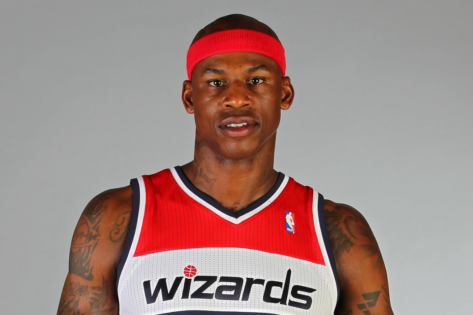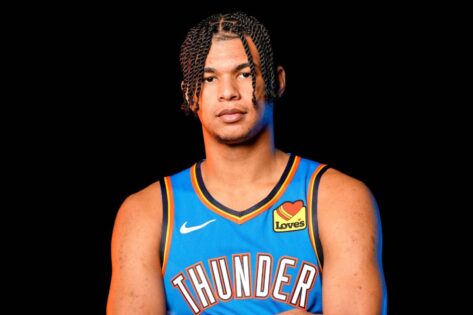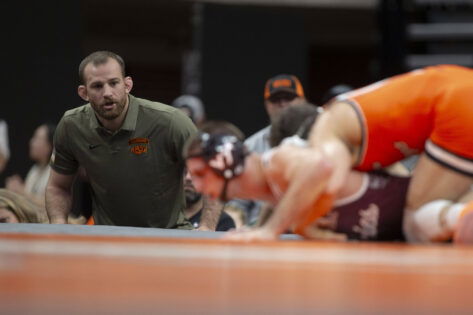What’s a 6‑foot‑4 17‑year‑old supposed to do when his knees crumble overnight? Al Harrington’s record‑shattering growth spurt caused fast food to emerge as “medicine” for the Harrington family. But that diet nearly cost him his NBA dream before the Pacers ever drafted him. The 45-year-old ended his career with the Naismith Prep Player of the Year, USA Today Player of the Year, and Gatorade National Player of the Year awards in 1998, as well as an average tally of 13.5 points and 5.6 rebounds per game.
Still, the journey there wasn’t your typical smooth ride. In fact, college recruiters came at him hard, offering under-the-table money that most 17-year-olds would’ve jumped at. But Harrington wasn’t like most. He kept his eyes on the prize—pro hoops. Ironically, though, before he could chase any dream, he was stuck at home, dealing with an unusual enemy: pain caused by a massive growth spurt.
That’s where an unlikely savior stepped in—a $227.82 billion fast-food giant. “I give McDonald’s a lot of credit for who I am today,” Harrington said while chatting on the Sloane Knows! podcast. The reason? “My biggest growth spurt between 8th grade and my freshman year, I finished my 8th grade year being, I was 5’10 and in two and a half months I was 6’4,” he revealed. That kind of growth in weeks? Yeah, it came with a price.
To no surprise, his body didn’t take it lightly. “I was sleeping, I was in a lot of pain, I had something I’m sure you might have had it too, was being an ex-athlete – Osgood-Schlatter, which is like a growth thing in your knees or whatever,” Harrington shared. For those who aren’t aware, Osgood-Schlatter disease is a painful condition that particularly affects the patellar tendon of adolescents involved in sports that involve a lot of jumping, running, and sudden changes in direction. That summer? He didn’t even get to play.
Eventually, that summer became a blur of downtime and double cheeseburgers. “So I didn’t play a lot that summer, you know, so I was in the house and lots of pain or whatever,” he said. And how did he cope? “[Drinking] milk and eating a lot of McDonald’s.” But here’s the twist—while the golden arches helped him grow, it also lead him to a NBA rejection.
McDonald’s nearly put AI Harrington on the NBA’s rejection list
Back in 1998, AI Harrington was living the dream at just 18. He’d skipped college, bet on himself, and heard his name called on draft night by the Indiana Pacers with the 25th pick. It was a big moment. Harrington became one of only three high schoolers taken that year, alongside Rashard Lewis and Korleone Young. But while the draft felt like a validation, what came after threw him off course—and surprisingly, McDonald’s had something to do with it.
Speaking to GQ in 2018, Harrington didn’t hold back. “Man, when I first got to the NBA, McDonald’s was an acceptable dinner for me.” At first, it seemed harmless. But over time, it took a toll.
“To go from that to now, where I make sure everything is all-natural—I didn’t even think about my diet until my third year in the league, when I came into training camp overweight and [Indiana Pacers general manager] Donnie Walsh was like, ‘You’re too young to be overweight.’ That was the first time it hit me how much weight I was carrying around.”
To make things worse, the league itself didn’t roll out any favors either. “I came in during the lockout year, so we only played 40 games,” Harrington said. The minutes were scarce. As a rookie, he barely got 7.6 minutes a night and averaged just 2.1 points. Nothing was promised.
Yet Harrington didn’t fold. By Year 3, he earned his spot. By Year 4, he was a playoff piece. Over 16 seasons, he played for seven teams, averaged 13.5 points per game, and crossed the 980-game mark. Sure, talent got him in—but cutting out McDonald’s? That might’ve saved his career.
The post Al Harrington Confesses Using $227.82 Billion Fast Food Product as Growth Medicine Before Getting Rejected by NBA Coach appeared first on EssentiallySports.



